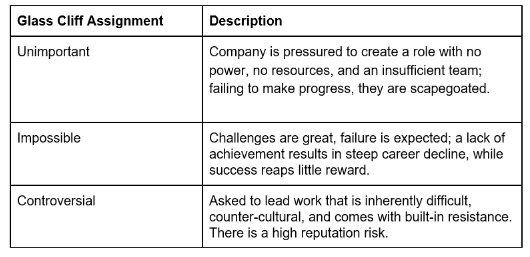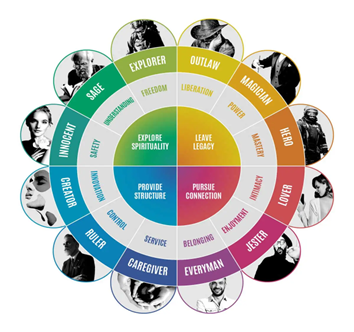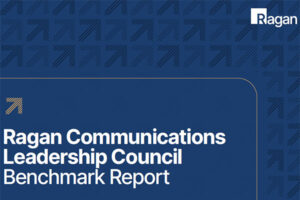How to challenge glass cliffs and codify your archetype
Having broken through the glass ceiling, we now must recognize the glass cliff.

Having women in top leadership roles is more important than ever. Women occupy more than half of management roles and are most often the leaders supporting well-being of employees through diversity, equity & inclusion. Yet, we are passed over for c-suite roles and find difficulty in being supported by networks that shift our trajectories towards c-suite placement AND c-suite success – “and” being the operative word. This is particularly true in the world of public relations where near 80% of CEO positions are occupied by men.
It becomes exponentially difficult as a woman of a historically excluded group – we lag behind men and white women, making up only 13% of c-suite roles. As a Black woman in leadership, it is palpable to me how often women are put in these roles and do not have equal opportunity to thrive. Often moved into leadership in times of crisis, many women, especially from historically marginalized communities, are met with inadequate resources, staffing, training, or support. Having broken through the ”glass ceiling”, we are thrust into positions teetering on the brink of failure. With high risk and little margin for error, these precarious circumstances are a phenomenon known as the “glass cliff”. To attenuate this cliff, we can apply the framework businesses use to build archetypal strategies, as it lends itself to considerations decision-makers – and women themselves – might make regarding potential glass cliff roles.

Exhibit A: DEI strategist Tara Jaye Frank describes the types of glass cliff assignments that racialized leaders often experience.
We must first learn to recognize glass cliffs. Sandra Douglass Morgan made headlines for being hired as president of the National Football League’s Las Vegas Raiders. Morgan is the third African-American, and first Black woman, in the NFL’s history to serve as team president. However, the Raiders organization is facing seismic turmoil. Morgan is the third person to hold her position in 2 years, her predecessor being let go amid allegations of a hostile workplace. The Raiders also fired their head coach because of racist comments in emails. During her introductory press conference, Morgan stated, “I’m well aware of the recent challenges this organization has faced. Let me be clear, I am not here to avoid or sidestep problems or concerns that need to be addressed.” That she felt compelled to preemptively note this, speaks to the environment. It is important to celebrate the monumental nature of her moment; it is equally prudent to acknowledge the challenges of the cliff ahead.
The difficulties Morgan faces are not specific only to her role, or to the Raiders organization, but to the entire league. The NFL has well-documented issues concerning inequity. Researcher Michelle Ryan asserts that, “the fact that the glass cliff is so dependent on context suggests that change is possible. We can design interventions to reduce the likelihood that members of underrepresented groups will continue to face the glass cliff.”
Specific organizational context can be determined using psychiatrist Carl Jung’s personality archetypes, grouping subconscious motivation into categories, that have long been adopted for business. In the same way archetypes paint a portrait of organizational culture and values, archetypes also apply to solving complex diversity, equity, & inclusion challenges. There are 4 underlying processes of this glass cliff phenomenon: 1) selection bias, 2) gendered beliefs about leadership, 3) appointing non-prototypical leaders, and 4) women’s choices. The following insights provide a structural response to the patterns that lead to glass cliffs.
Champion your archetypal strategy
When you codify your archetype, it establishes clarity in decisions you make and anchors your organization through crisis. Consider that 95% of decision-making is subconscious and influenced by our unchecked biases. Understanding both the positive and negative attributes of your chosen archetype creates a competency profile and a procedure for the leader you recruit and works to mitigate selection bias that underlies the glass cliff. Once determined, these attributes will be used to build job descriptions, craft interview competency questions, and will equip decision-makers with the tools to understand and measure a leader’s performance.

Exhibit B: Brand Archetype Tool by Just Creative
Design for attributes, not gender
Researchers found that male executives were reluctant to subject their male peers to the challenges of managing an organization through crisis – propelling women into glass cliff roles. This behavior is rooted in gendered beliefs about leadership, with women often being assigned “caregiver” or “lover” attributes. Meanwhile, men were more often associated with “ruler”, “outlaw” or “hero” roles. A recent study refers to these beliefs as “push factors”, “Push factors are externally driven – the limitations placed on women by others in their network, their organization, and the society or culture.” The work to define your archetype aids in attracting the right leaders, irrespective of gender, fulfilling the role that fits the needs within your organizational context. Your archetype helps you achieve your business objectives by selecting leadership consistent with your chosen attributes, using a method backed by science and psychology – rather than outdated stereotypes. You can address the “push factors” in your organization by gathering insights from your current employee base of women.
Recruit for trajectory, not typecasting
In business, we colloquially say “your brand is your promise”; the underlying idea is that your chosen actions – or lack thereof – are a values statement that will attract or deter stakeholders. Understanding the archetypal values that uphold your brand provides a map that will guide you in finding the leader you need to advance your organization towards the future. In times of crisis, conventional wisdom might say that, if your previous leader was a white male, then hiring a Black woman is the best way to portray that your organization is serious about change. However, if you have aligned your hiring strategies with the attributes of your codified archetype, you can allay performative virtue signaling that comes with simply appointing a non-prototypical leader to garner belief from stakeholders. Rather, taking steps to ensure your candidate pipeline is inclusive will assist in appointing a leader that best matches your values, instead of potentially subjecting those already historically marginalized to further harm.
Make the invisible visible
Empowering people with choice is not a benevolent act, but a necessary one from leaders. Codifying your archetype makes visible the values you hold, the attributes you value, and the people you want to engage. It also serves to empower prospective leaders with the information needed in making a decision to voluntarily lead through crisis. Researchers found that many women make the choice to take on roles that provide a challenge, relishing the opportunity to prove themselves amidst unfavorable circumstances. Even so, transparency in the hiring process allows an informed choice where their strengths, values, and those of the organization are aligned – and it will garner greater employee engagement overall.
Codifying your archetype is a structural consideration that embeds your values in every decision-making opportunity. While it is not a prescription for all of society’s ailments, it can help tip the scales toward a more equitable future, starting within your organization. After all, the glass cliff is possible not due to a lack of training or experience, with candidates thrust into positions they were unqualified for. In fact, quite the opposite is true, with historically marginalized candidates often needing to demonstrate higher levels of expertise than their white male counterparts. It has been the lack of systems-focused solutions that have continued to perpetuate injustice. Empowering leaders that embody the values and attributes foundational to your organization promotes the success of all.
Amira Barger is executive vice president, Health DEI at Edelman.






